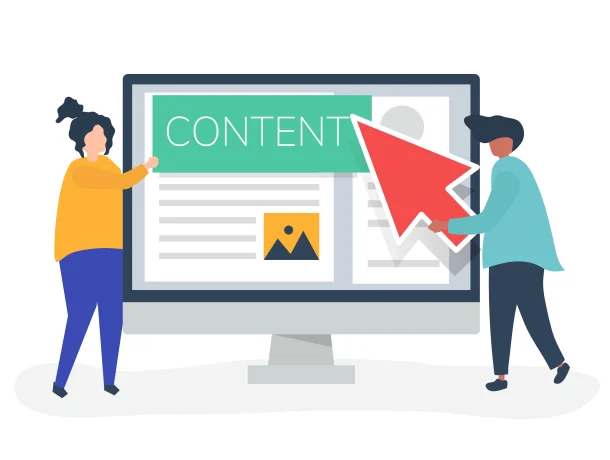
- March 27, 2025
- Digital Marketing
Table of Contents
What is Content Repurposing?
Content repurposing is the intentional process of converting current content—such as blog articles, videos, podcasts, or infographics—into new formats in order to reach a larger audience across numerous channels. Instead of constantly developing new content, repurposing allows you to reuse excellent material in innovative, platform-specific ways that retain consistency while increasing reach and effect.
A thorough blog piece, for example, can be turned into an Instagram carousel, a TikTok short film, a podcast episode summary, or even a YouTube explanatory script. This not only extends the life cycle of your content, but it also raises the likelihood of engaging different portions of your audience who consume content in various ways.
It’s crucial to understand that content repurposing entails more than simply copying and pasting information into another format. It entails tailoring the content to the tone, style, and technical specifications of each platform while maintaining the essential message. This increases the discoverability of your content, boosts your SEO efforts, and allows you to maintain a consistent online presence without depleting your creative resources.
In a digital world overloaded with information, content repurposing provides a better, more sustainable way to maintain visibility and relevance, making it an essential strategy for content marketers, bloggers, and organizations looking to maximize the return on investment from their content initiatives.
Why Repurpose Your Content?
Content repurposing is more than simply a time-saving approach; it’s an effective strategy for making the most of every piece of content you publish. With the increasing demand for consistent, high-quality content across platforms, repurposing enables marketers and businesses to maximise value while maintaining a consistent online presence. Here’s why content repurposing is critical to your digital strategy:
- Increase the lifespan of your content: Excellent material should not be a one-time event. Repurposing allows you to revitalize existing blog posts, videos, or infographics by editing and sharing them in new ways. This keeps your material relevant and visible long after it was originally published.
- Reach a larger audience: Not everyone consumes content in the same manner. Some people prefer to read, others enjoy watching movies, and many people spend time on social media every day. Repurposing allows you to reach your audience wherever they are, whether that’s on YouTube, Instagram, LinkedIn, podcasts, or email newsletters.
- Reinforce key messages: Marketing is all about repetition. When you convey the same message in numerous ways, it becomes more memorable. Repurposing strengthens your brand’s voice, fundamental themes, and calls to action without becoming redundant.
- Save time and resources: Making content from scratch can be time-consuming and costly. Repurposing allows you to work more efficiently by reusing good material in new ways. This lessens the workload on your content generation staff and accelerates the publishing process.
- Improve SEO performance: Repurposing information in multiple formats, such as converting a blog into a video or slideshow, might lead to new SEO chances. You may improve your search engine exposure by targeting different keywords, adding hyperlinks to the original material, and upgrading earlier pieces.
- Improve engagement across platforms: When properly adapted, repurposed material performs well across several channels. For example, a brief infographic description may receive more shares on Pinterest, whereas a quote visual from a podcast does best on Instagram. This increases your chances of engaging without reinventing the wheel.
- Support your multi-channel marketing strategy: In today’s marketing landscape, being present on numerous platforms is essential. material repurposing guarantees that you have platform-specific material for social media, email marketing, blogs, and video channels, all while remaining on-brand and messaging consistent.
- Maximize the value of evergreen content: Repurpose your best-performing material on a regular basis. If a blog article generates continuous traffic, convert it into a lead magnet, video instructional, or downloadable PDF guide. This increases the depth of your content marketing funnel and enhances ROI.
Repurposing content is not about repeating efforts; rather, it is about expanding the potential of your existing content. By reinventing and reformatting what you’ve already done, you may amplify your message, expand your audience, and establish a more robust content strategy.
Types of Content Ideal for Repurposing

Not all content is created equal, but some pieces are true goldmines in terms of content repurposing. The idea is to find material with high performance, evergreen value, or informational depth, and then convert it into many content assets that serve various audiences and platforms.
Here are the best forms of content for repurposing:
1. Long-form blog posts are easy and diverse to recycle. You can do:
- Break it into short social media postings or tweet threads.
- Create it as infographics, carousels, or quotation graphics.
- Make it into downloadable manuals or checklists.
2) Videos
- Video content has enormous reuse possibilities.
- Transcribe the video and create a blog article.
- Cut it into little segments for Instagram Reels, TikTok, or YouTube Shorts.
- Extract essential quotes from image posts.
- Make it a podcast episode (audio version).
3. Podcasts
- Podcasts are rich in information and easily repurposed:
- Turn episodes into blog articles or transcripts.
- Use audio snippets for reels and audiograms.
- Convert episodes into newsletters with takeaways.
4. Infographics
- Infographics may be split into:
- Smaller social media images or carousels.
- Slides for presentation or SlideShare
- Data points for blogs or email campaigns
- Explainer videos with the same facts and visuals
5. Case studies and testimonials
- Break them down into social proof quotes for Instagram and LinkedIn.
- Convert the entire case study into a blog or PDF download.
- Make short video success stories.
6. Email Newsletter
Email content frequently includes brief, impactful value-driven insights. You can do:
- Combine several mailing themes into a single blog article.
- Convert the tips into downloadable eBooks or tutorials.
7. eBooks and white papers
These are high-quality, research-driven items that can be readily divided into:
- Blog series
- Webinar or workshop content.
- Social media tips or instructive videos
- Lead magnets of various formats (checklists, one-pagers)
- Infographics and Data Visualizations
8. Webinar and Live Events
- Repurposing webinars enables you to
- Break sessions into highlight snippets.
- Create blog entries or instructive articles.
- Extract quotes and Q&As for social media.
- Create a follow-up email series or eBooks.
Choosing the correct material to repurpose is determined by your objectives, audience behavior, and platform preference. Prioritize evergreen content, top-performing posts, or highly informative pieces that provide long-term value—and turn them into a whole content ecosystem that promotes brand growth and visibility.
Creative Ways to Repurpose Content Across Platforms

Repurposing content is more than simply recycling; it’s about proactively altering your best-performing content to reach a larger audience, increase ROI, and improve your brand message across many channels. Let’s look at creative and effective ways to adapt material across platforms:
1. Use blog postings for social media material.
Break long-form blog content into:
- Quote graphics: Emphasize powerful sentences and transform them into shareable posts.
- Twitter/X threads: Summarize significant points from a tweet series.
- Carousel posts: Make step-by-step tutorials or listicles for Instagram and LinkedIn.
- Reels and TikToks: Share a summary or a quick tip from your content in a short video.
To increase traffic, provide a call-to-action (CTA) that links to the complete blog content.
2. Convert videos to several formats
Video content is extremely adaptable. From one video, you can:
- Extract audio from podcast episodes.
- Create a written transcript for SEO-optimized blog entries or subtitles.
3. Turn podcast episodes into written content
- Writing blog summaries or whole transcripts.
- Sharing audiograms on social media.
- Converting crucial insights into email newsletter content.
- Creating quotation visuals with guest highlights.
- Use Q&A segments as FAQ information on your website.
4. Use email newsletters for micro-content.
Is that a weekly or monthly newsletter? It is a content goldmine. You can do:
- Take out tips for Twitter/X discussions.
- Create visuals or infographics with advice columns.
- Combine several issues into one eBook or reference guide.
- Share useful snippets via LinkedIn or Facebook posts.
5. Convert Infographics into Bite-Sized Visuals
Infographics are dense with images and info. Here’s how to repurpose them.
- Cut into slides for use in carousels or presentations.
- Use individual data points for Instagram or LinkedIn visualizations.
- Make portions into mini-videos using motion graphics.
- Create Pinterest pins using pieces of the infographic.
6. Break down ebooks and guides
Instead of letting your comprehensive eBook gather digital dust:
- Convert chapters into YouTube video scripts.
- Turn pieces into email drip campaigns for lead nurturing.
7. Use webinars or live sessions for evergreen content
Webinars are ideal for repurposing because they are typically high in value. You can do:
- Share the replay as gated content.
- Repurpose the content as authored blog pieces.
- Extract questions asked throughout the session and compile them into a FAQ page.
- Create a visual summary or highlight reel.
8. Refresh and repost evergreen content
Your previous content may still be incredibly relevant—it just requires a little polish.
- Update statistics and examples.
- Reoptimize for new keywords and SEO chances.
- Add new visuals or internal links.
Repurposing your material not only saves time but also guarantees that your message is conveyed to various touchpoints, extending its lifespan and reach. By being innovative and intentional with your strategy, you can extract the most value from every piece of content you publish.
Conclusion
In today’s fast-paced digital world, content repurposing is more than simply a smart strategy; it’s critical for increasing the reach and value on every piece of content you publish. Instead of always beginning from scratch, repurposing helps you to breathe new life into your existing content, attract new audiences, and reinforce your brand message across many media.
Repackaging your blog posts, videos, podcasts, infographics, and other content allows you to maintain consistency, boost SEO performance, and increase engagement—all without doubling your workload. It also provides your audience with extra methods to consume your material in the manner that suits them best.
So, whether you’re a small business owner, marketer, or content creator, start viewing your existing material as a library of chances. With the correct repurposing strategy in place, you’ll save time, increase visibility, and maximize the value of your content marketing efforts.











